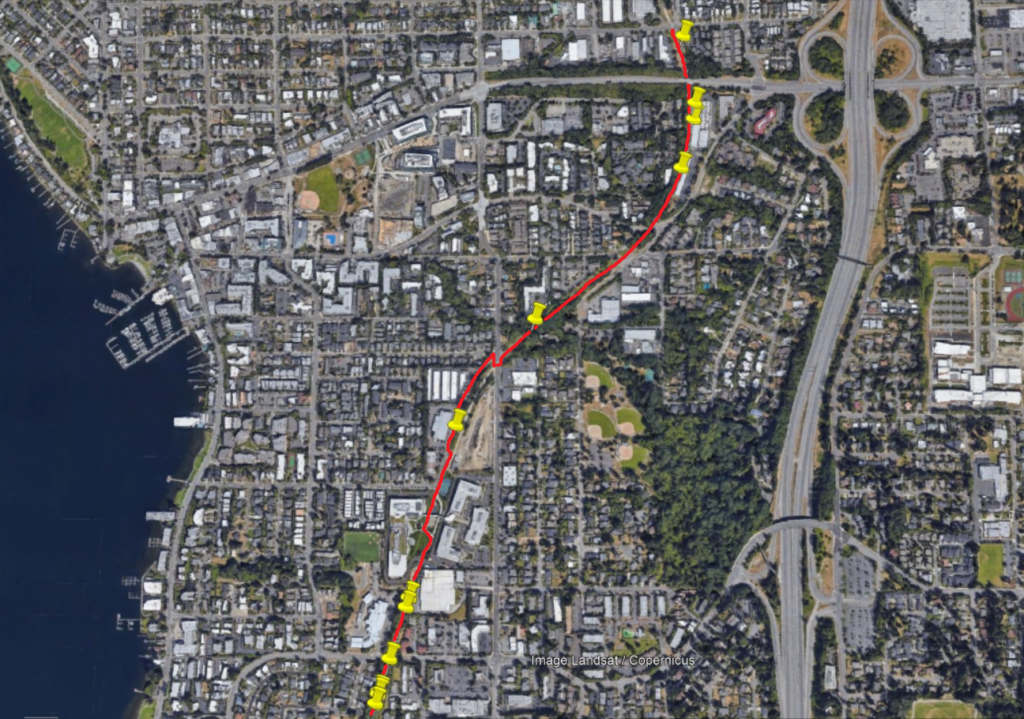Comprehending the Geologic Timescale
I admit, it is an ambitious task to comprehend just how old the universe is. Imagining what the world was like even 100 years ago is a challenge. Now try to visualize what the Earth looked like circa 300 million years ago. Or maybe even 4 billion years ago. In total, the Earth is a staggering 4.6 billion years old! For example, humans (specifically Homo sapiens), have only existed for around 200,000 years. That’s roughly 0.007% of Earth’s entire history. Although we may seem important, humans are nothing more than a blink-and-you’ll-miss-it cameo in the story of our planet.
Although I spent an entire quarter of science learning about Earth’s pre-human history, there was still one assignment that was yet to be completed: being able to interpret the scale of time I had spent so long learning about. For this, the ingenious idea arose (from my dad) to scale everything down into a two-kilometer stroll. Yes, we would be squishing everything that has ever happened on Earth down into a less-than-an-hour long walk.
To untangle this time scale, I had to run the numbers. This involved the use of plenty of ratios, division, and multiplication until I got a clean sheet of data points all within the confines of 2000 meters. To clarify, I’m an American, but in this case I choose to use metric because it is significantly easier. In any conceivable circumstance, a base-10 system is far more efficient than any other convoluted and wonky system of measurement. I’m talking about you Imperial.
In the end, I abbreviated the major events of Earth’s history into 13-point list of dates. Without further ado, here is the entire history of the Earth, all within a comfortable two kilometers…
- Formation of the Earth – 0m
- Formation of the Moon – 43m
- Beginning of Late Heavy Bombardment – 217m
- Start of Archean Eon – 261m
- Earliest Known Life – 391m
- Start of Proterozoic Eon – 913m
- Earliest Known Eukaryotic Life – 1304m
- Earliest Known Multi-Cellular Life – 1739m
- Start of Phanerozoic Eon – 1765m
- End-Permian Mass Extinction – 1890m
- K-Pg Mass Extinction – 1971m
- Paleocene-Eocene Thermal Maximum – 1976
- Lucy (First Human) – 1999m
Note: The trail we used for this lab project was the Cross Kirkland Corridor Trail. This trail goes through the cities of Kirkland and Bellevue, Washington.
Beginning the walk, there was an ample stretch of time between dates. However, the further we advanced, the more frequent they became. It’s crazy to think that for over half of Earth’s history, not much happened and what did happen was remarkably slow. For example, we reached the first known life at 391 meters (3.7 billion years ago). However, it wasn’t until 1739 meters (600 million years ago) when we arrived at the first multi-cellular life. Life literally took over three billion years to evolve from having one cell to having two cells. However, once multi-cellular life first evolved, the process accelerated exponentially. It took three billion years for the most primitive two-celled organism to establish itself, but only 600 million years for everything from trilobites to a T-Rex and even humans to develop.
Even then, a great deal can happen in 600 million years. Although 600 million years is rendered tiny by three billion years, it is still an absurdly long period of time. One of my favorite misconceptions about the past is how the Tyrannosaurus Rex fought the Stegosaurus. In fact, more time transpired between those two species than between the T-Rex and us. The time the dinosaurs were around on Earth is tiny in comparison to the entire history of the planet. Even so, the Mesozoic Era, the time the dinosaurs were around, still lasted 186 million years.
For the bulk of Earth’s history, nearly nothing happened. It wasn’t until geologically recently that things began to get interesting. At the end of the day, what I learned from this project is how colossal the timescale of our planet’s history is. Albeit everything interesting (complex life) happened in a tiny fraction of that time, that tiny fraction of Earth’s history is still utterly vast in comparison to humans’ time on Earth. In the 2000 meters of our walk, humans did not appear until 1999 meters, merely a single long stride from the end.

The photo above is a Google Earth view of the walk. Each of the yellow pins indicates a date.
If you want to learn more about the history of our planet, check out my PowerPoint presentation about it on YouTube…